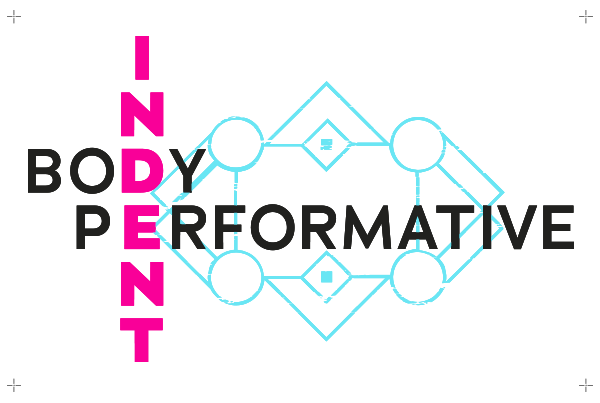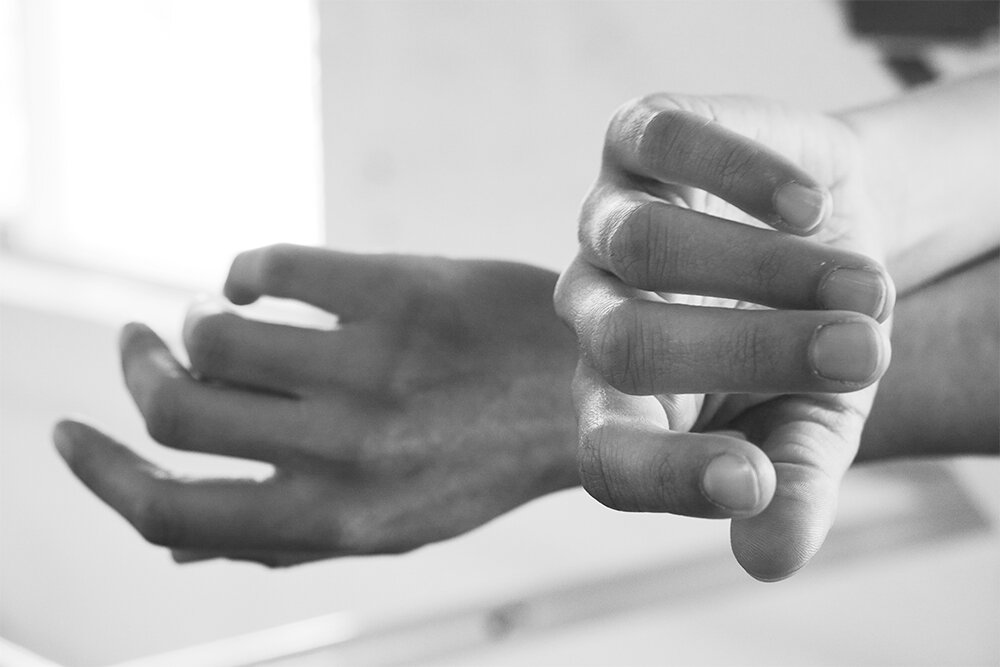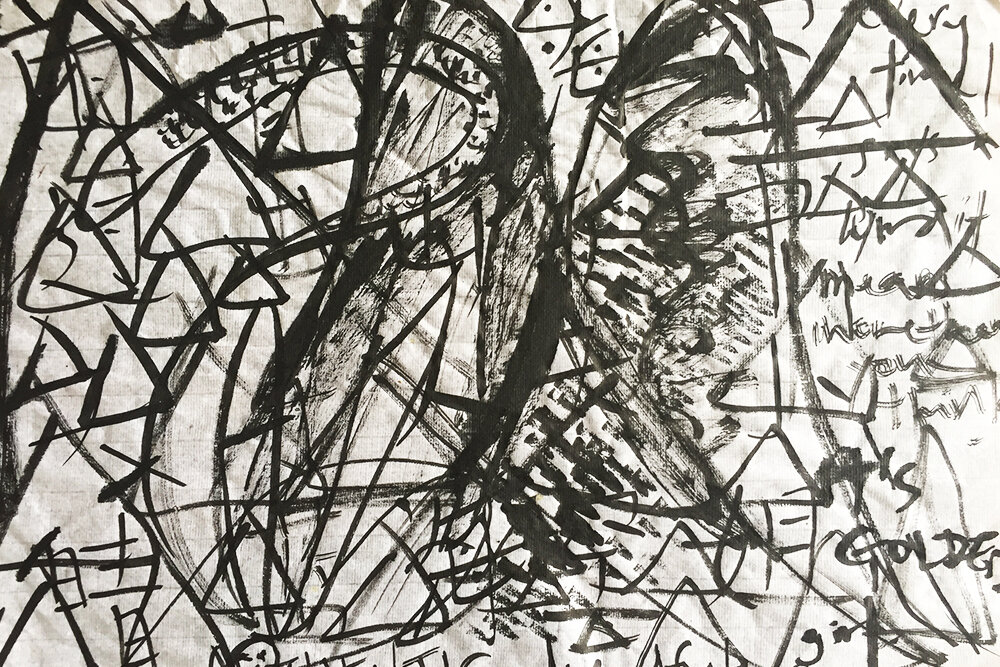PRESENT CONTINUOUS
ISSUE 2
THERE’S STILL TIME
Ranjana Dave | November 2019
Present Continuous is a celebration of affect in several modes, whether it takes the form of questions about the nature of viewing and embodying and what it means to see, but also to represent, and anxieties and vulnerabilities around intimacy, financial stability and body image. Present Continuous is a reasonable compromise; it suggests the passing of time, but also its elongation; it gestures towards the future, but only inscrutably so.
+ Read more
On Precarity: A SERIES OF CONVERSATIONS
Chintan Modi, Ranjana Dave, Thulile Gamedze | November 2019
A conversation that delights in meandering through the terrain of our anxieties and uncertainties, reproduced in full, for the chance that it might intrigue you as much it intrigued us.
NOTES ON SEEING, OR WHAT DO WE DO WITH DANCE?
Anishaa Tavag | November 2019
I have recently taken to pondering a rather banal matter: why dance? To put it simply, we read books, watch movies, and listen to music; we also see plays and dances. But of course we are postmodern and pastiche, and so we also read bodies and dance histories. And here lies the question underneath: what do we really do when we ‘see’ dance? Is seeing all that we do?
+ Read more
STILL STANDING 2: AN EXPERIMENTAL VIDEO
Artist note by Shabari Rao | November 2019
Someone asked me: what’s the difference between stillness and waiting? Waiting is predicated on an imagined future, while stillness is concerned with only the present.
PERFORMING CONTEMPT
Danish Sheikh | November 2019
Over a period of six weeks across February to March 2012, a two-judge bench of the highest appellate Court of India heard arguments on the constitutional validity of Section 377 of the Indian Penal Code. In 2017, I wrote a play titled Contempt that edited exchanges from the transcripts of the Court hearings in 2012, and juxtaposed those alongside a series of accounts from the lives of queer Indians. In staging the play, I walked into the theatrical space holding on to my identity as an activist-lawyer and the play became a conduit for me to conduct my practice of the law. But in another staging, designed by theatre practitioners, what would happen to the legal questions the play sets up, when it is framed within an aesthetic experience?
DANCING WITH PHOTOGRAPHS
Sharan Devkar Shankar | November 2019
This series looks at how the artist has been able to observe the moving body, in its everyday performativity and in choreographed works. It can be viewed at a pace the artist sets for you, or in your own time.
EXPOSURE AS A CONDITION FOR INTIMACY
Claire Vionnet | November 2019
What is the common ground between a dance performance with naked bodies, an encounter with a stranger through touch (e.g. in contact improvisation) and a profound conversation with a friend? These situations all deal with intimacy. Rooted in the two Latin prefixes inter (in-between) and intus (inside), intimacy etymologically refers to the most private part of oneself, as well as the interrelation with others. It is furthermore in the encounter with others that intimacy emerges and grows. In this paper, I discuss what I consider the main ingredient for intimacy to grow— exposure— and the vulnerable situation of exposing oneself.
THE END OF SWAN LAKE
Urvi Vora | November 2019
Some disappearances are both remarkable and unremarkable: resistant to being captured, but unable to stop moving. Apparently, we are always performing — by acting, by being, by affecting. And in that we are constantly moving. And in that we are constantly disappearing.+ Read more
TALKING TO MYSELF: A NON-LINEAR, WANDERING (FOLK?) DANCE FOR THE PAGE
Bernice Lee | November 2019
In my postcolonial Singapore, there is no folk dance, only dances that people do. My dancing has always been taught and learnt in order to be performed, to be seen, and often to be represented. In my eagerness to move, I feel that I am allowed to ‘invent’ my own folk dance or my own way of dancing (ghosting, or solo dancing in general). Seeking the collective from this place feels like such a gift. Our shared histories might only be in the general, but our feeling for what has been lost might intersect. Our dance together might reference authentic/ancient traditions through our bodies — but I have no obligation to represent authenticity if what I seek is merely the action of exchange. Can a folk dance be ephemeral? Can it exist only for the crowd that gathers? Will it be historicised by others for others?
CARIES OF CAPITALISM: ARTISTIC STATEMENTS FOR INDENT
Ada Mukhina, Alena Papina, Daria Iuriichuk and Olga Tarakanova | November 2019
Caries of Capitalism was born as a joke about the similar pronunciation of the words ‘caries’ and ‘precarious’. We all come from different backgrounds, but each of us deals with precarity one way or the other. However, with Caries of Capitalism, we aimed not only to share our personal experience and concerns, but to raise the general awareness of precarity and to mobilize the community. So we invited four more precarious theatre workers to join our team. Working on Caries of Capitalism collaboratively was for us an attempt to join our forces in a common fight. At the same time, we often felt like we actually contradicted one another irresolvably. We hope that this interplay of solidarity and tension shines through our texts and that they themselves can be read as an example of how to act together.
UNSETTLING THE DUST: WHY ARTS LEADERS MUST ALSO DISRUPT DOMINANT NARRATIVES
Arundhati Ghosh | November 2019
Artistic disruptions break hegemonies and question homogeneities. They make the public uncomfortable about their ignorance or naiveté, and compel institutions to rethink their modes of engagement and their role in society. While disruptive artistic practices may thrive in the most oppressive social and political scenarios, they are enabled to flourish and assert their full impact with help from support systems and structures. This is where leaders of arts organisations who support, produce, promote, disseminate and advocate artistic work are key to ensuring that artistic work gets their due. But in order to do so, these leaders must believe in the power of disruption, and be disrupters themselves. As leaders, they must challenge dominant narratives by raising critical questions, enquiring about the politics of funding, critiquing the dynamics of power, and above all, taking risks similar to those that artists take, in order to serve as rightful ambassadors for a work of art.
What Do Men Think of Your Body?
O
n the Challenges of being an Olympic Weightlifter
Katie Rose Hejtmanek | November 2019
“What do men think of your body?”— a stranger asks. I move through the world as a weightlifter, someone who jerks more than 80kg over her head in competition. I also move through the world as a muscled woman. In 2016, I began my journey into strength sports as a cultural anthropologist and a performer. Over the course of three years, my body has changed and I have embodied the movement of someone who can lift more than her body weight over her head. This personal transformation and embodied strength elicits comments, questions, and curiosity. Here, I illustrate my movement in the world, as weightlifter and woman, and I engage with the opening question, “what do men think of your body?” I discuss what’s at stake: the embodiment of strength against, and resistance to, misogyny and patriarchy.













